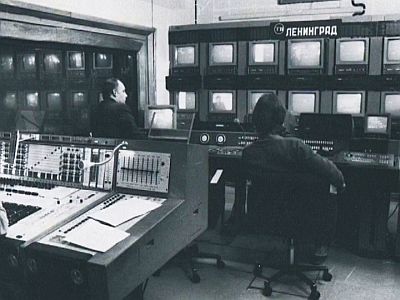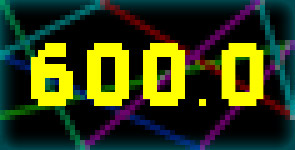In 1988 the Petersburg Television Center got 2 Soviet computers "Agate". This analogue of Apple II had the 8-bit processor of 1 MHz, 64 Kb RAM, keyboard and 2 game boards with wheel and button. Apple DOS operat. system and Basic language were in ROM. Data carrier is 5"-diskette. Video on 25 Hz. Check the modes:

|

|
The engineer-developer of TV Center Laboratory Victor 3D has undertaken to make "Agate" synchronous that it could be combined with any video source. The videocard of "Agate" has undergone to actions of a knife and a soldering iron: the internal synchro-generator has been cut, and instead of it the TV pulses of of frames and are entered. THe outputs - RGB signals - are connected to TV coder. The Key-signal was created for keying of "Agate" image with other video. Move the cursor on scheme... "Agate" has been installed in studio 3, whence the releases of "600 Seconds" news were. Victor 3D created a TV-printing program and a graphic editor for it. So on Leningrad TV the first air graphics in the country has appeared. But the super task was ahead...
"Agate" has been installed in studio 3, whence the releases of "600 Seconds" news were. Victor 3D created a TV-printing program and a graphic editor for it. So on Leningrad TV the first air graphics in the country has appeared. But the super task was ahead... |
|
 |
Studio 3, TV-director's control room
On the right is Victor 3D at the "Agate" computer |
"600 Seconds" news host Alexander Nevzorov has offered to make the timer from 600 seconds up to 0, and for greater dynamics - the shares of seconds and colored lines. Victor 3D undertook to make a timer program, but the speed of "Agatha" was so low, that the graphically drawn numbers changed slower than a second. At that time, a group of students-programmers headed by Professor Alexander Kagan, had an internship at the TV-center. Victor 3D introduced them to the developments. Having delved into the "Agate" problem, Alexander Kagan made a timer not in a graph, but in a fast text mode - adding the numbers by the yellow spaces.
This timer became known... For us, the curiosity is that these numbers, hard-pixeled from the poverty of the computer, were taken by everyone as the stylistic sophistication of "600 seconds".
 
|